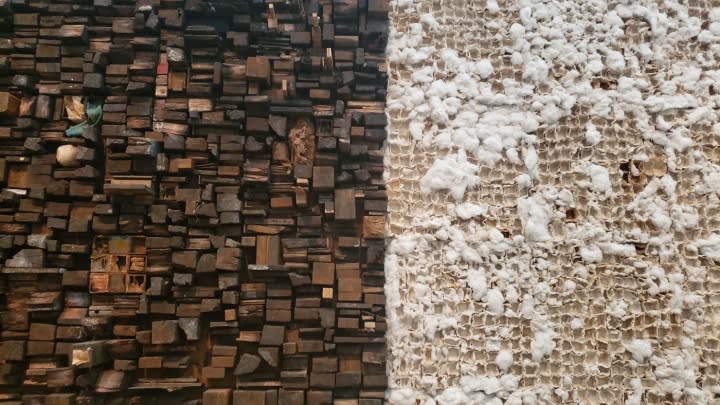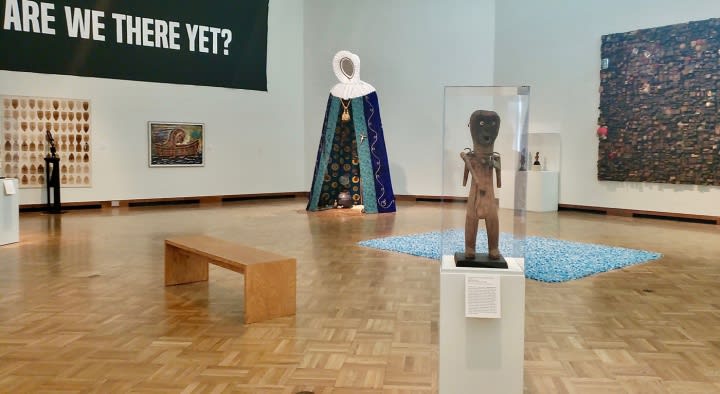Allen Memorial Art Museum, Oberlin College
87 North Main Street | Oberlin OH 44074
20/08/19 - 24/05/20
On August 20, 1619, “20 and odd” Africans disembarked the English warship White Lion at Point Comfort, Virginia Colony. This date is often invoked as the precise starting point of the “peculiar institution” of slavery in the United States, despite the fact that neither slavery as a legal institution, nor the United States as a defined body, existed at that time. On this contested 400-year anniversary, this exhibition examines the connections and separations forged across what has become known as the Black Atlantic, a term coined by scholar Paul Gilroy.
Starting in the 15th century, the slave trade transformed the Atlantic Ocean from a formidable barrier into an unprecedented highway for human dispersal and cultural reinvention. In the largest forced migration in human history, ships transported 12 million captive Africans across the Atlantic—not counting the millions who perished on the journey. In the Americas, nearly 80 percent of all new arrivals before 1820 were born in Africa, while in Africa, stark population loss radically altered local societies. Hailing from at least 50 ethnic and linguistic groups, enslaved Africans contributed through intellectual and physical labor to the growth and definition of American and European cultures.
Afterlives of the Black Atlantic brings together works from the United States, Europe, Latin America, the Caribbean, and Africa that collectively explore the complexities of memory, identity, and belonging in the wake of the transatlantic slave trade. Drawn largely from the AMAM collection, with the addition of several loans and a site-specific commissioned work by José Rodríguez, Afterlives places contemporary artworks in dialogue with historical objects, contextualizing the concerns of artists investigating this history and its continued relevance. Calling attention to the impacts of human trafficking, cultural exchange, and trauma that still bind the territories on the Atlantic rim, this exhibition invites new and nuanced conversations about routes and mapping, consumption and trade, diaspora and dispersal, and identity and belonging.
Artists represented in the exhibition include Belkis Ayón, José Bedia, Dawoud Bey, Willie Cole, Leonardo Drew, Edouard Duval-Carrié, Felix Gonzalez-Torres, Wangechi Mutu, Vik Muniz, Robert Pruitt, Kameelah Janan Rasheed, José Rodríguez, Alison Saar, Hank Willis Thomas, Carrie Mae Weems, and Fred Wilson.
Afterlives of the Black Atlantic was organized by Andrea Gyorody, Ellen Johnson ’33 Assistant Curator of Modern and Contemporary Art, and Matthew Francis Rarey, Assistant Professor of the Arts of Africa and the Black Atlantic in the Department of Art, with assistance from Amy Baylis ’20.


